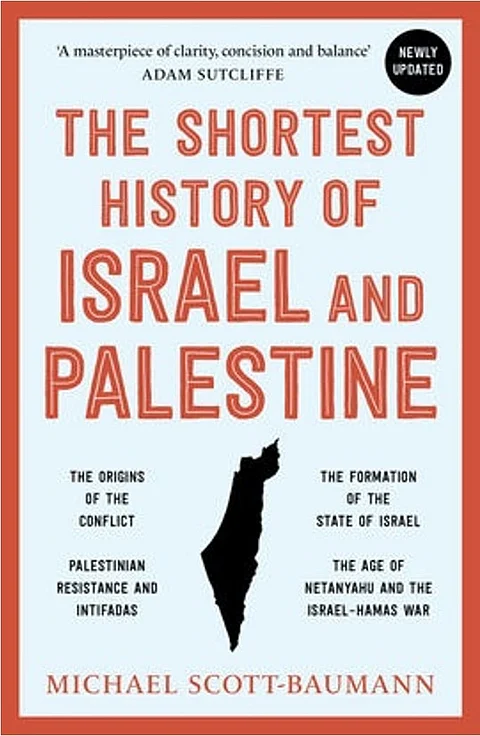

Michael Scott-Baumann aims to clear up the misconceptions, prejudices, and ambiguity surrounding the Israel-Palestine issue in his book, "The Shortest History of Israel and Palestine". His work aims to shed light on the causes of a conflict that has persisted for many years, offering a fair and current historical narrative appropriate for students and readers interested in the issue in general.
Ten chapters make up the book. Every chapter emphasises significant turning points that influenced the conflict for more than a century. Beginning with the Ottoman Empire, the author covers British control, World Wars I and II, foreign interventions, the effects on nearby Jordan, Syria, and Lebanon, and concludes with the October 2023 attack and ongoing turmoil.
The First Aliyah, a wave of Jewish immigration to Palestine in 1882, laid the groundwork for a sequence of events that shaped the tense history that followed. The book provides a chronological perspective, tracing the origins of the conflict from before 1914 to the present. The author has covered everything, from the failed Oslo Accords to the Balfour Declaration.
The utilisation of first-hand accounts from news stories, memoirs, diaries, and interviews offers an in-depth look at how the conflict has affected the lives of those on both sides. Additionally, the content's maps aid readers in understanding the changing borders and territorial shifts over the years.
Key Zionist organisations that were instrumental in obtaining land in Palestine, such as the World Zionist Organisation (WZO) in 1897 and the Jewish National Fund (JNF) in 1901, are also described in the book.
When Theodor Herzl published "The Jewish State" in 1896, a book that promoted a single Jewish nation-state, it marked a sea change. But there was a contentious component to Herzl's plan: a Jewish state acting as a Western colonial outpost in the centre of the Arab world.
Influential Jewish lobbying in the US and the UK helped Zionism, which promoted the creation of a Jewish homeland in Palestine, evolve from a theoretical concept to an actual entity.
Palestine was ruled by the British until the summer of 1947. The British chose to cede control and hand the issue over to the United Nations in response to violent Arab protests against Jewish settlement.
The inflow of Jewish immigration greatly influenced the dispute, which led to the creation of the UN Special Committee on Palestine (UNSCOP) to look into and provide solutions.
By accepting the idea, the Jewish agency in Palestine was able to secure international backing for the creation of a Jewish state. After David Ben Gurion proclaimed the establishment of the State of Israel on May 14, 1948, more than 300,000 Arabs left the newly created state.
An additional 400,000 Palestinians escaped between May 1948 and January 1949, many of them taking refuge in Gaza. The term "nakba" (catastrophe or tragedy) in Arabic refers to this widespread relocation as well as the events of 1947–1949. About 15% of the population that remained in Israel became citizens of Israel and were referred to as "Israeli Arabs" or "Palestinian Israelis."
Prioritising their physical survival, the stateless and displaced Palestinians had to first face the enormity of their situation. The post-displacement events, such as the formation of the Movement for Arab Nationalism, the ascent of Fatah, the founding of the PLO, the origins of Hamas, and the continuing tensions that have led to Palestinian casualties, are presented objectively by Scott-Bauman. With his keffiyeh, an Arab headdress that came to represent Palestinian resistance, Yasser Arafat became the face of Palestinian nationalism.
With the aid of well-structured statistics, maps, and terminology that aid readers in understanding the complexities of the battle, Baumann's writing is generally captivating.
For anyone seeking a book that not only chronicles the history of this protracted war but also updates them on more recent events, The Shortest History of Israel and Palestine provides a comprehensive and insightful analysis.
Have you liked the news article?